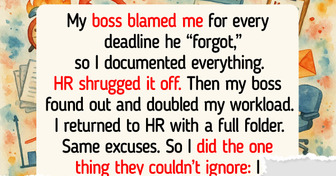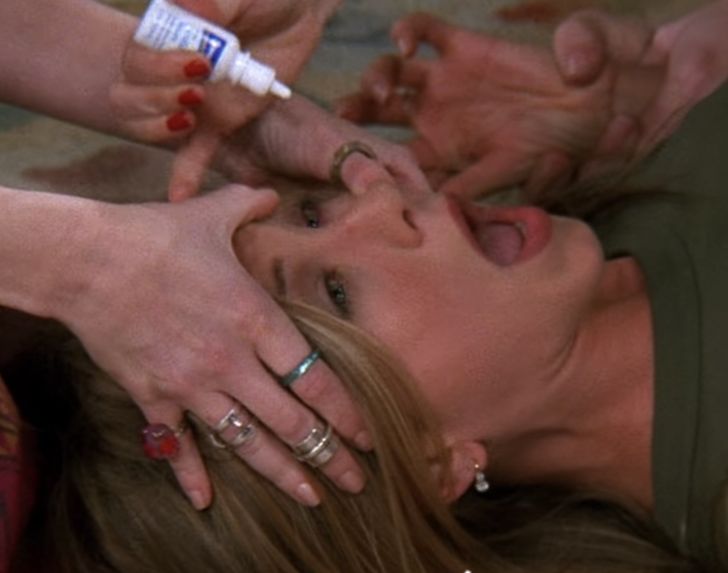Also, a lot of people rub things towards their ears while in reality you should rub towards your nose, there's a little "ramp" on that side of the eye that apparently is used to remove dirt!
7 Ways to Safely Remove Something Stuck in Your Eye
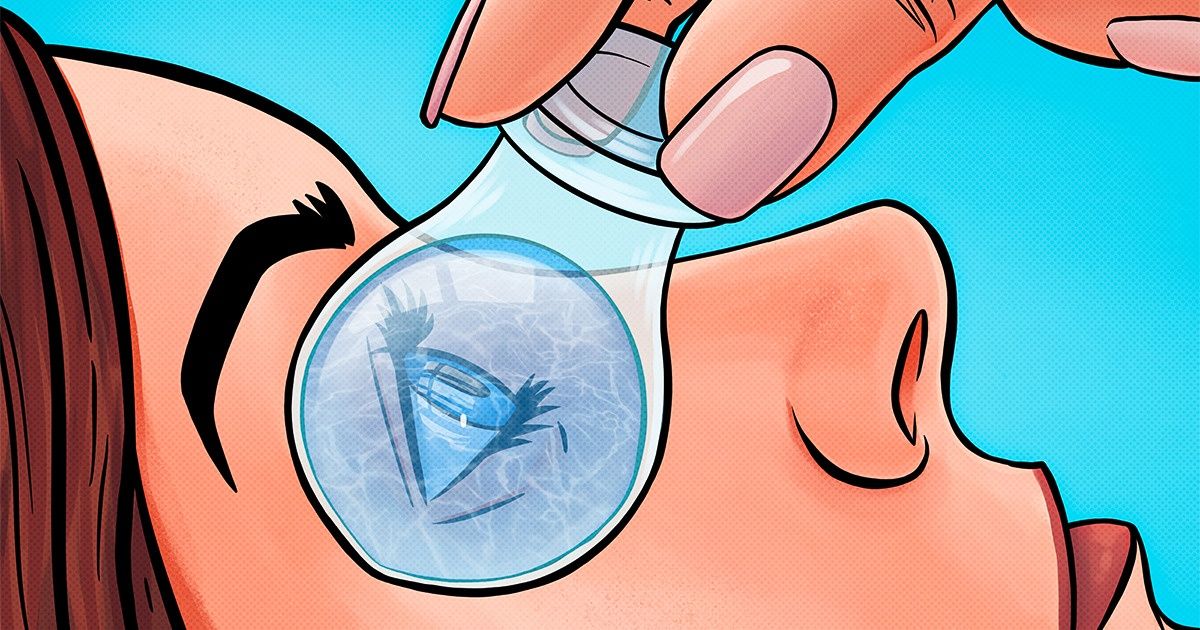
Normally, our eyelashes, eyelids, and tears work together to stop objects from entering our eyes or to quickly flush them out if they do get in. But still, it’s quite often that a small piece of sand or some dust does enter one of your eyes — like while riding a bike or when you’re at the beach, for instance. This can damage the surface of the cornea, which can be painful, so it’s important that you know how to get it out as soon as possible.
At Bright Side, we have listed some steps you can take to get something out of your eyes without damaging them more. And have you ever rubbed your eyes after cutting a chili pepper? Well, in the bonus section, you can find a special trick to mitigate this burning feeling quickly.
Knowing when you have to seek medical care
There will be times when you won’t be able to remove the irritant from your eye yourself, and seeking medical help right away is necessary. Consider the following cases:
- A chemical solvent gets into your eye.
- A foreign object flies into the eye at high speeds.
- A shard of glass or metal gets into the eye.
If it’s some dust or sand, you might want to try to get it out yourself first. But if after flushing you continue to experience symptoms like redness, abnormal vision, or pain, call a doctor to have it checked out.
1. Wash your hands before you touch your eyes.
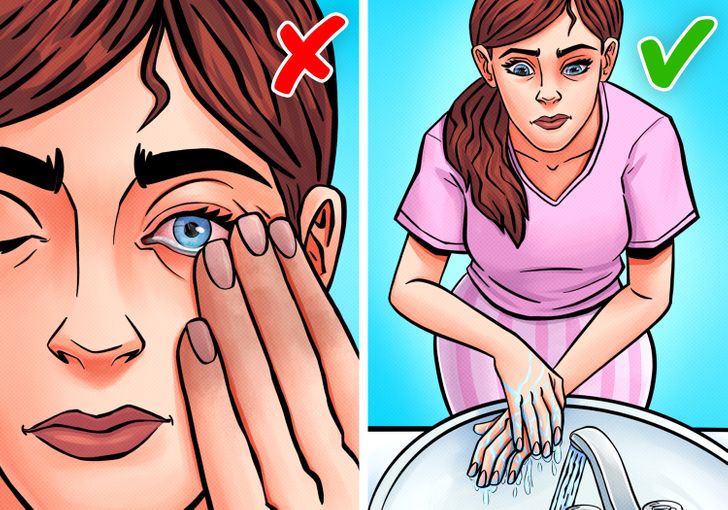
This step is easily forgotten, especially in cases where you would like to remove the irritant as fast as possible. However, it’s very important that before you touch your eyes, your hands are germ-free. You will lessen the risk of getting unwanted bacteria or even more dirt in your eyes, avoiding some very unpleasant eye conditions.
2. Try to blink and allow your tears to wash it out. Do not rub your eye.
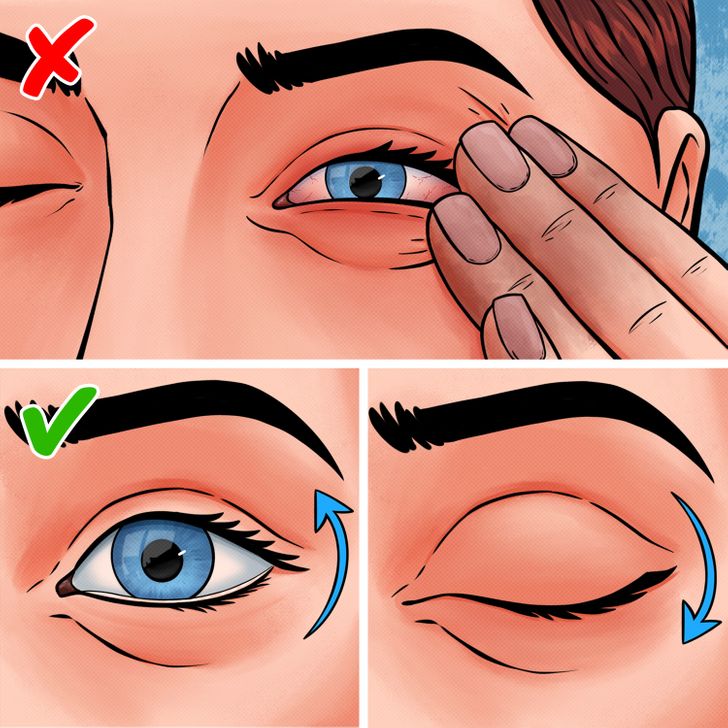
Rubbing your eyes is a natural reaction that almost everyone has when they feel something land in their eye. But this might actually cause even more damage to your eyes. So try to fight this urge and attempt to remove the sand or dust by blinking multiple times. This is the normal way in which your body keeps your eyes safe from potentially dangerous objects and it might just do the trick to freeing your eye of the irritant.
3. See if you can spot what got in your eye.
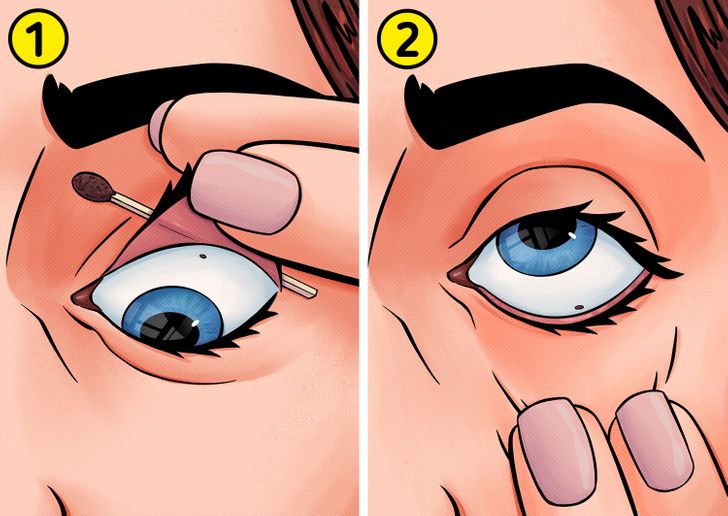
Once you’re in a well-lit spot, just look to up, then down, and to the sides. See if you can spot the object right away. If you can’t find it immediately, it may be located on the inside of one of the eyelids. To examine the upper lid, it might help to place a q-tip on the outside and gently fold the lid over its tip. Then look down and see if you can find it. For the lower lid, first, look up and then grasp the lower eyelid, gently pulling it down.
4. Take small grains of sand or dust out with a rolling motion, using a Q-tip.
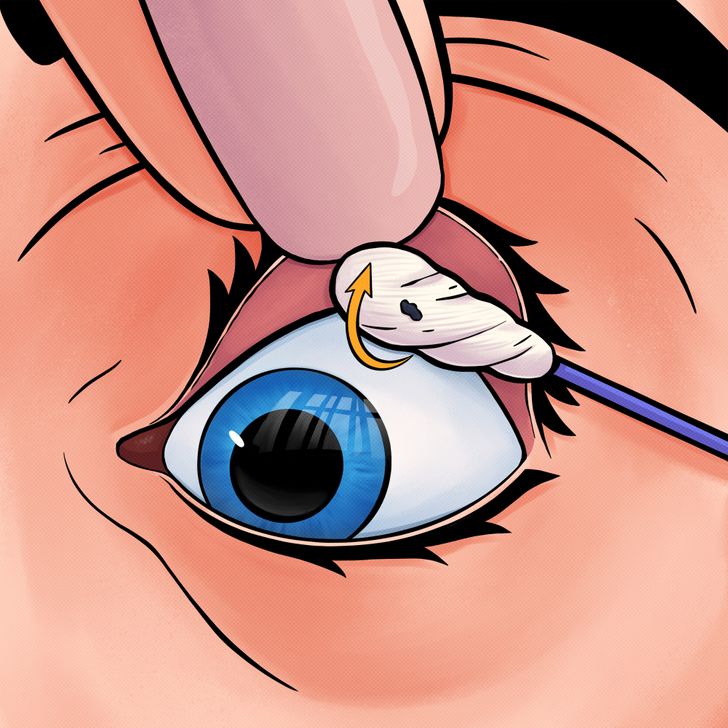
If you find an object inside of your eyelid, you can try to take it out with a damp Q-tip. Hold your eyelid with one finger and then place the swab against it. With a rolling motion, keeping away from the eye, you can take out the irritant safely.
5. Submerge your eye in (clean) water.
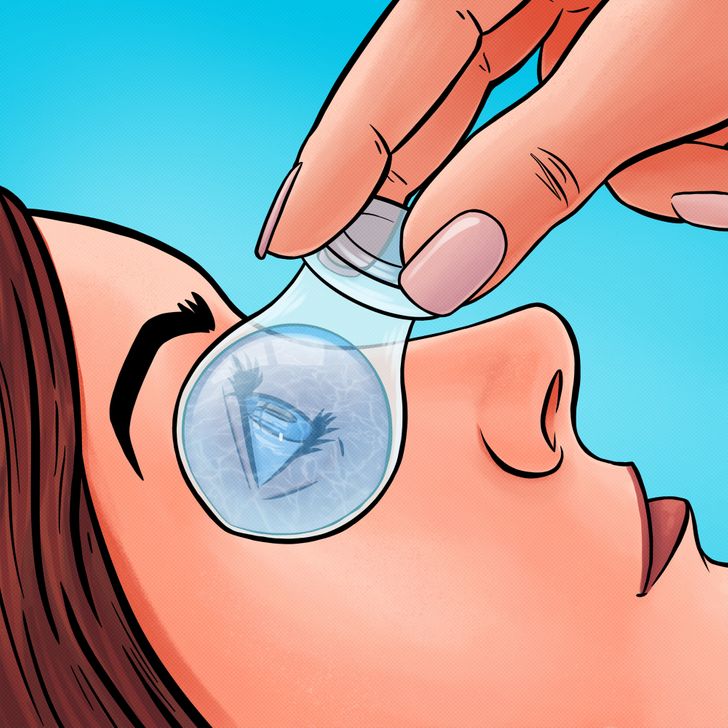
If you have an eye cup available, use it. First, rinse the eye cup and don’t let anything else touch the rim or the inside. Fill the cup up halfway with fresh water or eyewash, if available. Then put the cup over the eye to be rinsed, pressing the cup tightly to your skin to keep the liquid from leaking out. Tilt your head back and open your eye wide. Move your eye from side to side and up and down to allow the liquid to wash all parts of the eye.
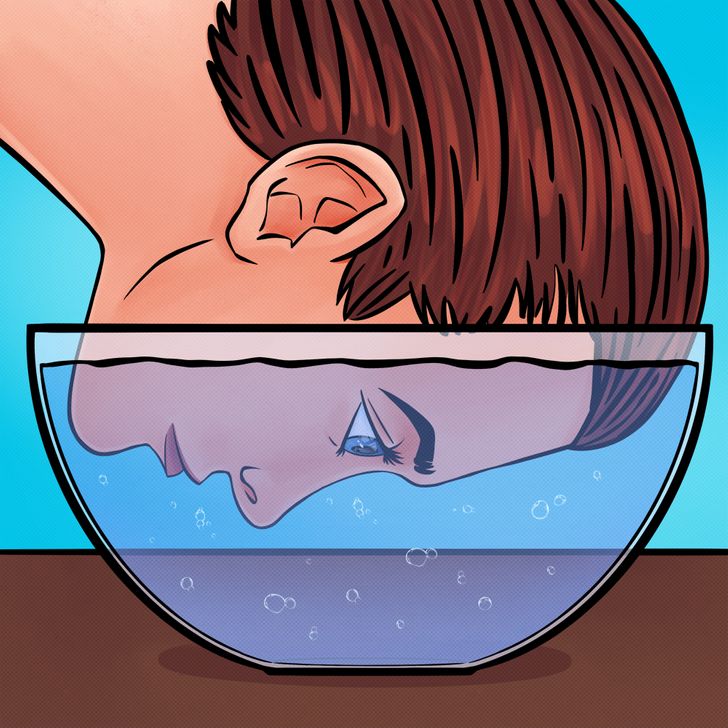
If running water over your eye scares you a bit, you can always choose this option. Simply get yourself a bowl of water and put your head into it with your eyes open. Move your eyes around so that the water can rinse all parts. When getting up, blink a few times and check to see if the irritant is gone.
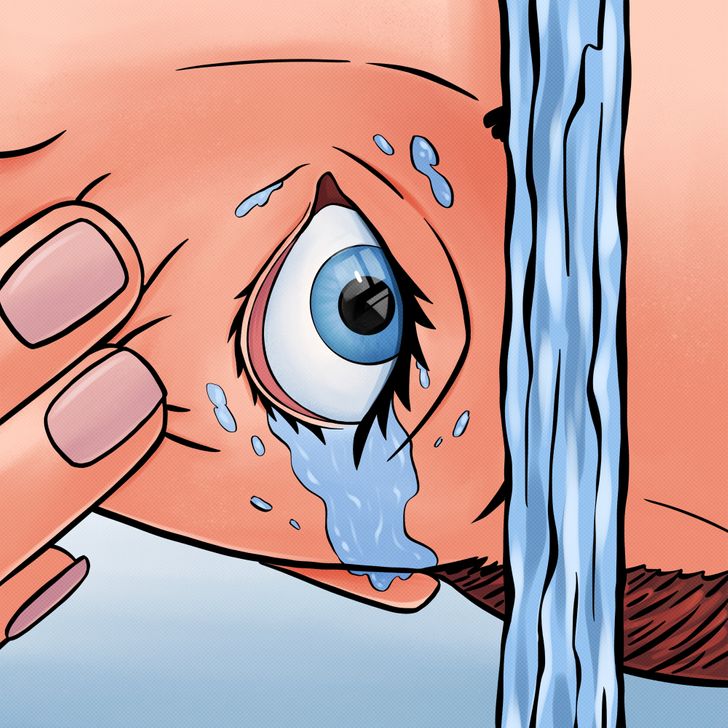
A third option is to hold your eye in some running water, from either the tap or the shower. Hold the lower eyelid slightly downward with your head tilted to one side. Have a small stream of water flush out the unwanted object.
6. Flush your eyes out for the right amount of time.
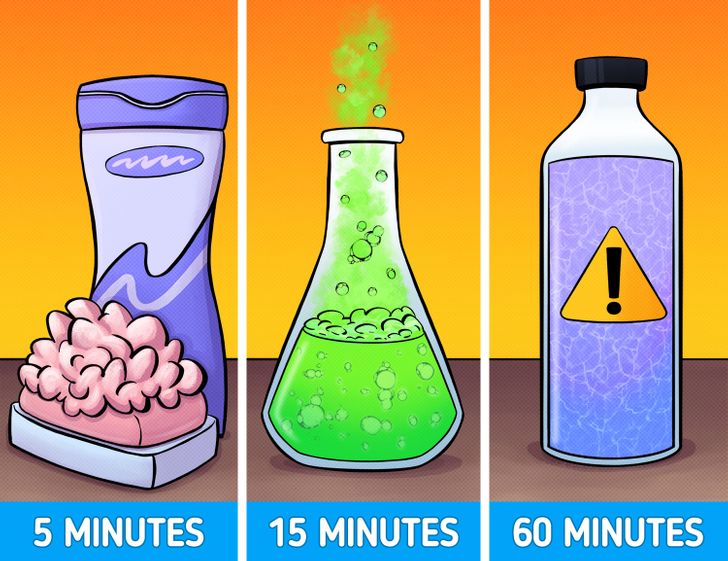
It is important to know for how long your eye needs rinsing. For anything mildly irritating, like hand soap or shampoo, 5 minutes should be enough. When chemicals get in your eye, make sure you flush them for at least 15 minutes. For penetrating alkalis (e.g. sodium or calcium hydroxide), rinse for at least 60 minutes. And remember, when you get chemicals in your eye, you always have to seek medical attention too!
7. Have a friend help you.
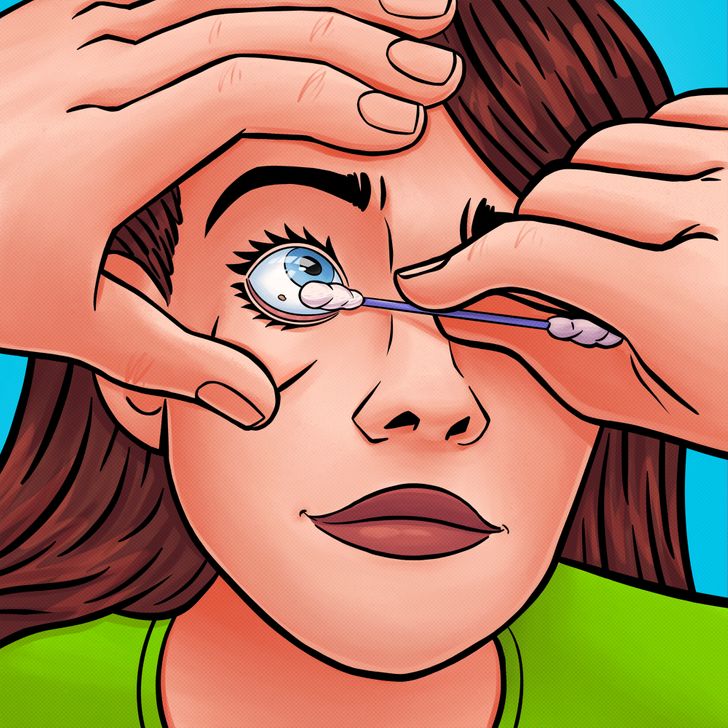
If you are having trouble, you can always ask a friend to do the examination for you. This person is probably slightly calmer and can look for the piece stuck in your eye. Pull your own eyelid down and look up, slowly enough that the inspector has a chance to examine your eye well. Make sure he or she washes their hands first!
Bonus: what to do when you rub hot chili pepper into your eye
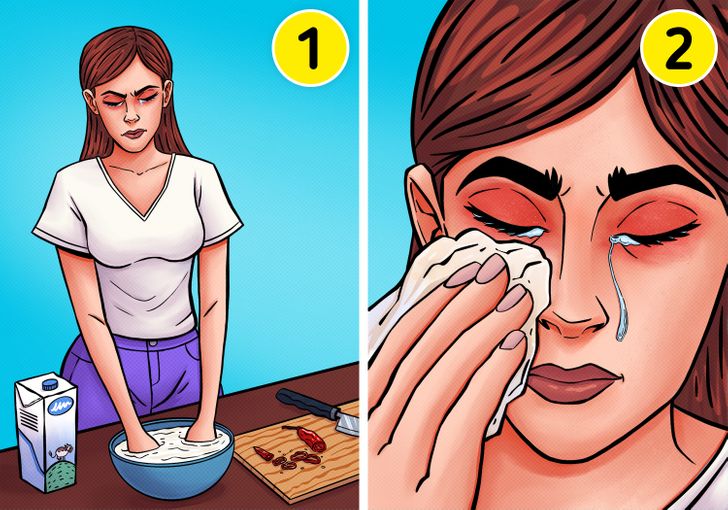
It’s better not to wash it out with water since this will only make the burning feeling worse. In a situation like this, you can use milk because it’s acidic and breaks down the capsaicin in hot peppers, thus relieving the pain. First, wash your hands with soap and then soak them in some milk to get rid of any chili oil from your fingers. Then gently pat some paper soaked in milk against the eye.
Have you ever had something stuck in your eye? Do you have any experience using any of these techniques? How did they work out for you?
Comments
I hope I never need any of these tips, getting something in my eye is a big fear!
What?
Related Reads
10 Moments When Quiet Kindness Turned Strangers Into Heroes
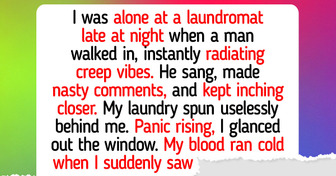
I Refuse to Pay Into My Stepson’s College Fund—I’m Not His ATM

I Refuse to Let My Dad’s New Wife Erase My Late Mom’s Memory, She’s Gone Too Far
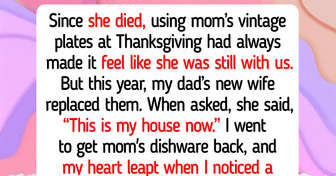
I’m Child-Free—And My Will Was the Plot Twist My Family Didn’t See Coming

I Discovered My Firm Was Secretly Hiring for My Position—HR’s Response Shocked Me

I Helped a Friend Have a Child — Now He Wants a Relationship I Never Agreed To
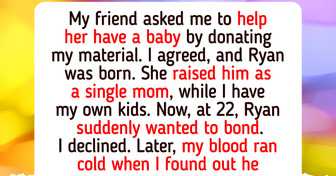
I Adopted a Son—Then His Biological Family Shattered Our World
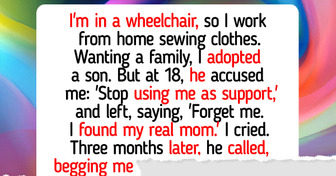
15 True Stories With Mind-Blowing Endings That Could Rival Hollywood
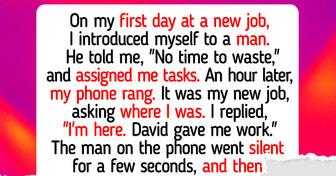
I Canceled Paying for My Grandson’s Life Costs, and He Turned My Kindness Into a Price

I Refuse to Be Treated Like the Family Nanny—And My Mom Chose Her Boyfriend Over Me
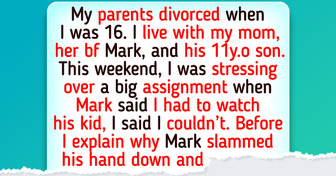
I Refuse to Sacrifice My Health to Keep My MIL Happy, I’m Her DIL, Not a Speechless Doormat

I Reported My Boss—HR Ignored Me Until I Did One Simple Thing
